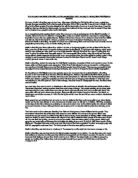Once the conscience has done its work, the process of passive resistance begins. However, passive resistance, unlike the name suggests, is in actuality very much active. It is active because it requires a great deal of commitment; with commitment comes time and effort; with time and effort comes patience; and with patience comes the clear-headed thinking required to bring down the forces of the oppressor. No effective act of disobedience can be random; it must be carefully planned and executed accordingly. When the Germans wanted to impose anti-Jewish methods upon German Jews taking refuge in Denmark, they were met with the most organized of resistance: in one such instance, Danish officials promised their “immediate resignation” should any anti-Jewish acts occur in Denmark (Arendt, 2000). Still, in order to offer more consequential protection to the Jews the Danish government had to employ more strategic means. The use of legal manoeuvrings enabled the Danish government to prevent the Nazis from imposing anti-Jewish rule in Denmark. In addition, assistance from a few traitor Nazis who sabotaged orders from Berlin, including a warning of the impending exportation of the Jews from Denmark, greatly improved the Danes’ ability to protect their Jewish refugees (Arendt, 2000).
Similarly, in the case of Martin Luther King Jr., a great deal of planning and strategy went into each march he undertook against racial segregation. So much so, that his organization had “four basic steps” for engaging in “non-violent campaign[s]” (King, 888-6). The final of these steps, “direct action”, was the act itself. Direct action involved plenty of detailed planning pertaining to where the march was to take place, when it was to take place, how it was to take place, and who was to be the target. Most importantly, as in all resistance movements, was the why it was to take place; it was this why that would elicit the most support and incite the most action in the community; it was this why that would stimulate the change that King (as with all such individuals and groups) sought. It was in all probability this why that would sway the minds of a few oppressors and lift the spirits of the latent oppressed (King, 2000).
Thus, it can be seen that civil disobedience is not in its full capacity passive. Instead, it requires considerable planning and action through which hardened minds can be softened and made sympathetic. This is perhaps the final pursuit in an act of civil disobedience; it is not simply to free the conscience of its doers, but also to stir the conscience of indolent onlookers. Through their commitment to principle and moral justice both King and the Danes were able to rally support from the oppressors themselves. King made an appeal to the conscience of neutral citizens to step up and put an end to racial segregation in the United States, while the Danes simply stood firm for their own principles, refusing to give in to Nazi ideals. Yet, their firmness was strong enough to influence the minds of hardened Nazis. A few oppressors had met “resistance based on principle, and their ‘toughness’ melted like butter in the sun” (Arendt, 805-6).
These two cases, Denmark in its treatment of the Jews and King’s racial unification movement, illustrate the effectiveness of a well planned and carefully executed resistance. But, more so, they illustrate the potential of the conscience to achieve justice regardless of detrimental consequences. Those who resort to such acts do so in the hope that their willingness to brave the oppressor will create an atmosphere that will foster change through “positive tension”. The purpose of this tension is to create a sense of urgency about the matter, one which can no longer be ignored by the authorities or by indolent citizens (King, 2000). It is in this tension that the why is clarified and minds are altered, and, ultimately, popular opinion is swayed. This is where the just conscience reaps its satisfaction; it is, indeed, what makes the resistance worthwhile.
Formal Outline
Civil disobedience is an action which requires a just conscience and a strategic plan whereby, if executed soundly, will eventually sway the beliefs in those the action is taken against, in other words, the oppressors.
- The role of the just conscience
- Withstanding the oppressor
- Must have a strong sense of justice, moral law
- Take positive, strategic action
- Passive resistance, refusal to comply
- Use of legal action by the Danes
- Clear planning by King, answering why
- Convincing the oppressors
- Means of convincing
- How the Danes won the support of a few Nazis
- How King won support from some members of the white race
- The accomplishments of civil disobedience
- The role of positive tension in the success of the act
- The end result of any civil disobedient act should be the satisfaction that a few minds have altered their original course of thinking.
Works Cited
Arendt, Hannah. “Denmark and the Jews.” The Norton Reader: AANP. Ed. Arthur M. Eastman, et al. New York: Norton 2000. 801-805
Houghton Mifflin, publisher. The American Heritage® Dictionary of the English Language, Fourth Edition. Houghton Mifflin Company, 2000
King, Martin Luther, Jr. “Letter From Birmingham Jail.” The Norton Reader. 887-900







